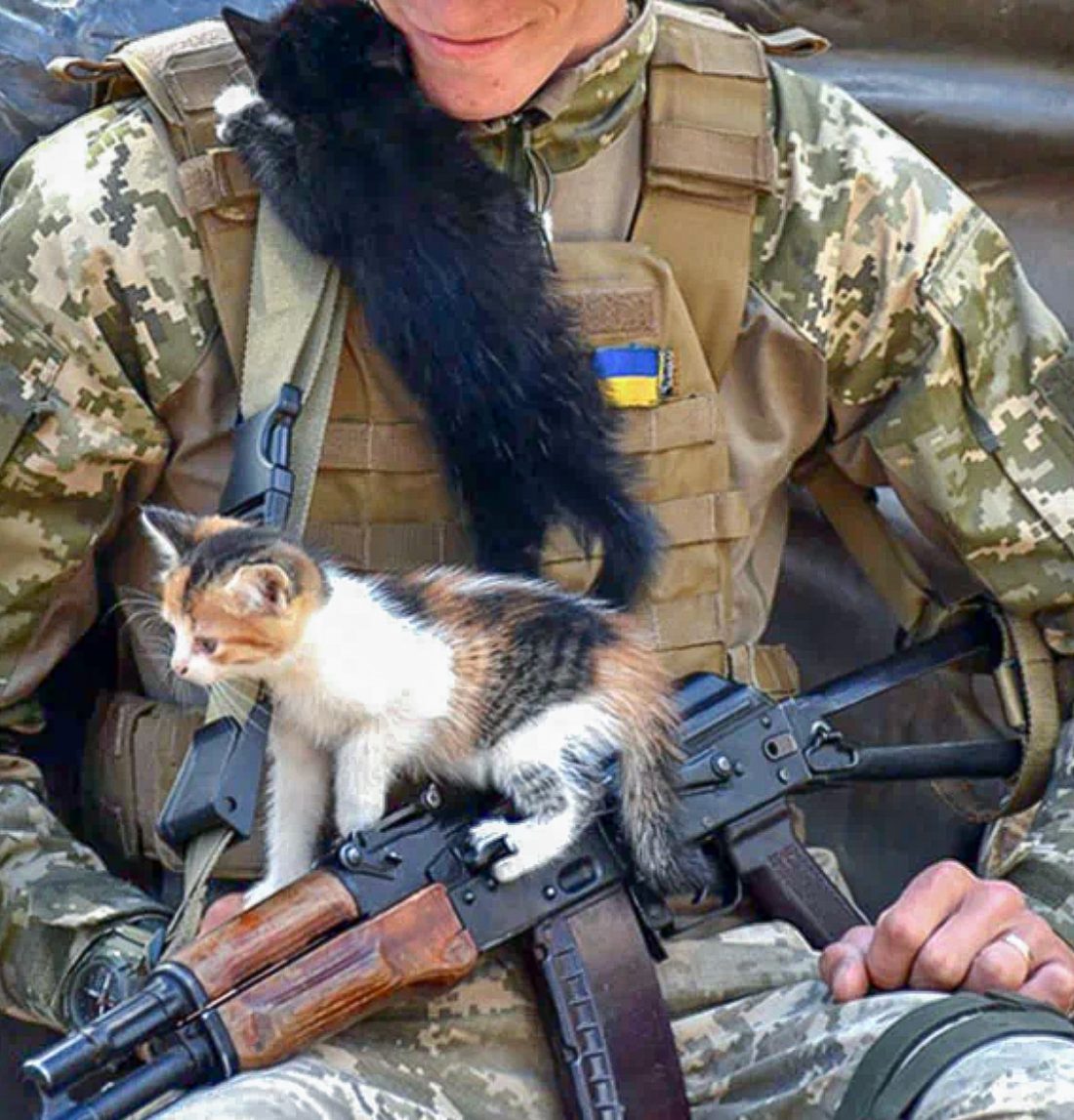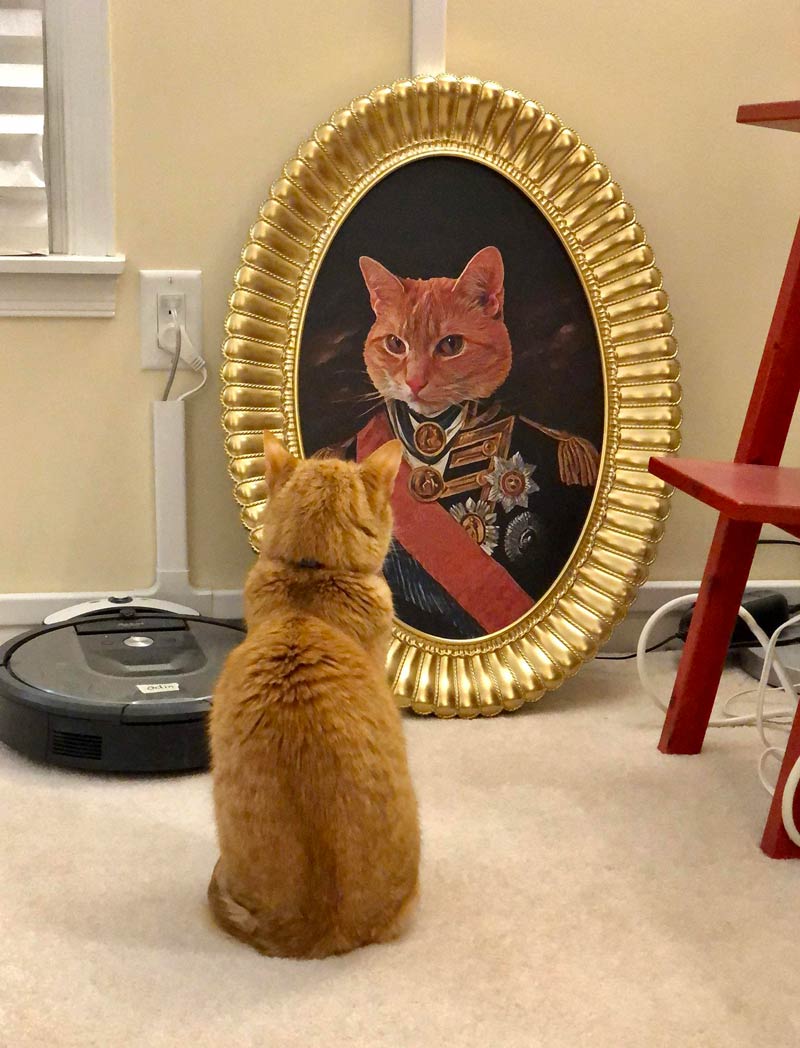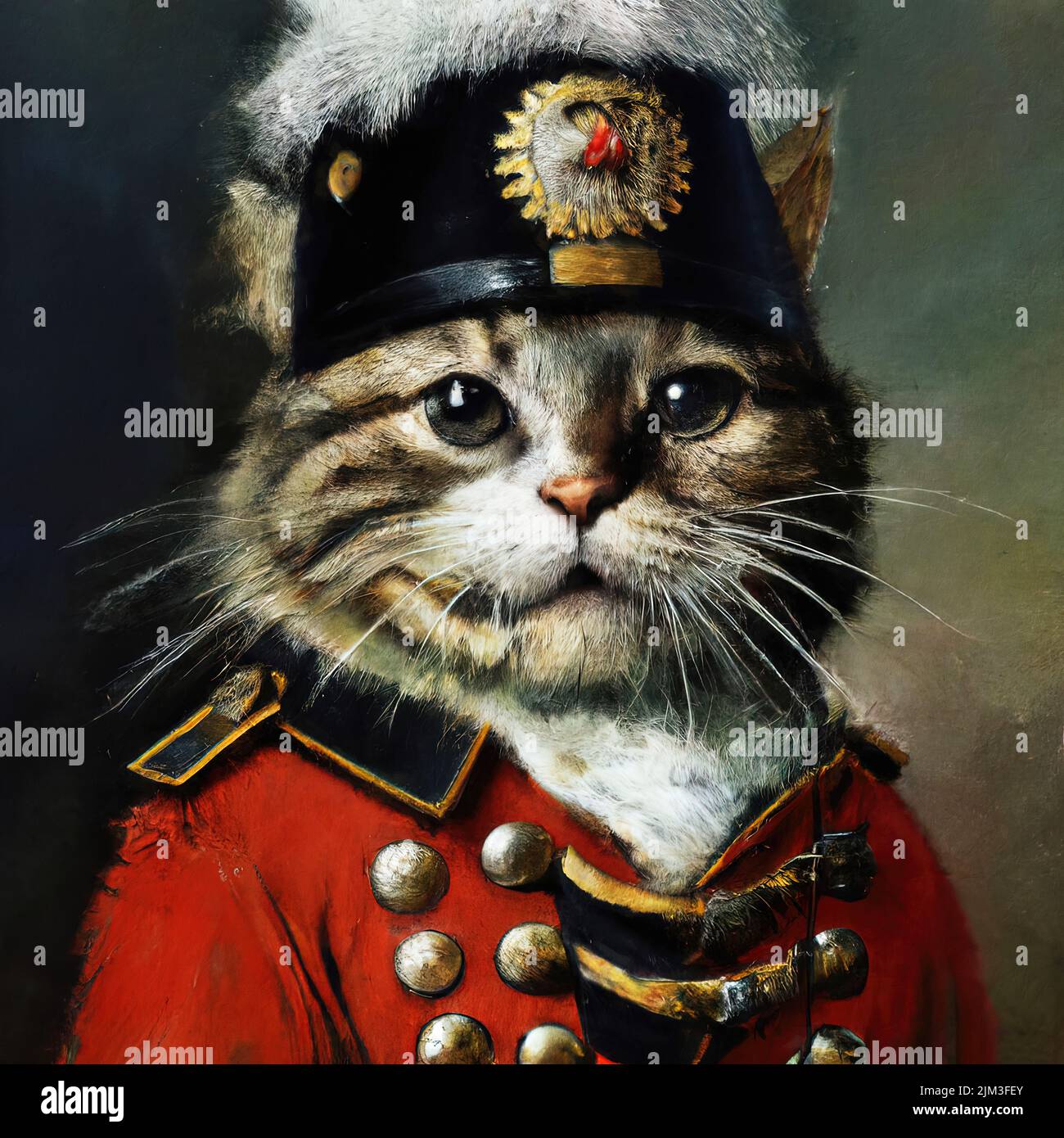Military Cats - Princess Popul was born on July 4, 1944 at Pearl Harbor Naval Base in Hawaii. Polly, as she was known to the sailors, was brought by the crew of James Lynch aboard the USS Fremont. The ship fought in the Pacific Theater of World War II and participated in the invasions of Saipan, Palau, Leyte, and Iwo Jima.
Gere brought Tom to England after the war. When the cat died in 1856, the hero was taxidermied and donated to the United Kingdom Services Institute. A stuffed cat labeled "Tom Crimea," now in the collection of the National Army Museum, was purchased at a flea market in the 1950s, so it's unclear whether it was actually a war hero.
Military Cats
Source: i.insider.com
Murka was a cat during the German siege of Stalingrad in 1942-1943, risking all nine of his lives by carrying messages about German positions from a Russian reconnaissance group. in his headquarters. Perhaps he was well rewarded for his efforts and loyalty, because there was a kitchen in the headquarters building.
In Half
When we think of military symbols and emblems, eagles and mules may come to mind. But "cats were also widely used as symbols in unit insignia, especially in aircraft units," Card said. "The 81st US Division had a cat in a bow on its back and a shoulder gauntlet badge attached to its uniform."
In this photo, we see a soldier sitting in the cockpit of a plane that may have been placed inside a hangar. There is a cat painted on the side of the plane that says: Who Said the Mouse.
Betcha you never learned these fun facts about America when you were in school. Cats in the army? It is often overlooked that cats have a long history as military animals dating back thousands of years.
They are mostly moody and shy, so they may not be of much help during a fight, but they are natural hunters and are more stealthy than dogs. Simon's story is perhaps the most remarkable of cats in the army.
Animals In War
A malnourished kitten trying to cross the poles was spotted in 1948 by British sailor George Hickinbottom in China. Hickinbottom smuggled the cat aboard HMS Amethyst. This little cat became famous on the ship because of her disobedience and she brought a dead rat as a gift to the sailors and slept in the captain's hat.
Simon had been on the ship for a year when the ship was attacked. Many soldiers were wounded, and many more were killed. Among the injured is Simon. He hid under the ship and the crew thought he was dead.
 Source: pictures-of-cats.org
Source: pictures-of-cats.org
Peebles was the cat on board HMS Western Isles. Another cat that was much loved by the crew, he was particularly smart and waved when a stranger entered the room. Peebles was seen on a high deck taking part in a skirmish during World War II.
There are many other stories about military cats, each with their own success story. It shows how scary cats can be during a fight. Not only are they useful for boarding ships and buggies, but they are a comfort to many soldiers thousands of miles from home and in dangerous situations.
Famous Felines
The next time you respect and honor the men and women who fight for their country, remember the animals who fight alongside them. On November 28, two weeks before Simon's service award ceremony, he died. Commander Crans and his wife accepted the Simon Award.
He was also awarded the Blue Cross Medal of Honor. After his death, various print media noted his legacy. He was given a funeral in which his custom-made casket was draped in the union flag and given full honours.
His tombstone reads: "During the Yangtze incident, his behavior was of the highest order." Elephants, turtles, dolphins - animals have been used in times of war for many years. And you've probably heard of dogs on the battlefield, but often overlooked cats guarded the soldiers.
Sure, you can train cats to do life-changing things, but who knew front-line herding was one of them? Read on to learn more about the bravest cats in military history. Sam's luck was tested again in November 1941.
Unsinkable Sam
He was transferred to HMS Ark Royal, which accidentally helped sink the Bismarck. The ship capsized after only three weeks. When HMS Lightning picks up the survivors, they find Sam. Cat retired from the military and spent the rest of her life as a mouser for the Governor of Gibraltar and Belfast Seamen's Home.
Bousfield contacted Alley Cat Allies and Military Mascots to help bring Hummer to the United States. These organizations raised $2,500 to purchase neutering, shots, paperwork, and a Hummer flight to Kuwait. Bousfield welcomed the feline veteran into her Colorado Springs home to live with the family's five other cats, as well as their dog, hamster and lizard.
 Source: oddstuffmagazine.com
Source: oddstuffmagazine.com
Friendly war cats and then famous war cats. Between Tiddles, a black cat who traveled more than 30,000 miles with the Royal Navy in the 1940s, and Simon, a black and white cat who was awarded the Dickin Medal, Britain's highest animal award.
can get the fight, you pet cat has a lot to live for. Pictured here is Lt. S.W. Turney, United States Air Service with a cat. More than a dog person? Then you should read about the bravest dogs in history.
Cats Used As Early Warning System For Bombs
In May 1941, Allied ships finally sank the dreaded German battleship Bismarck after a bloody three-day battle. Among the wreckage was a black and white tuxedo cat named Oscar (Nautical code for "man overboard") by the British crew of HMS Cossack.Five months later, Cossack was sunk by a German submarine,
and the cat survived. He is nicknamed "Unacceptable Sam." According to scientist Col. David Gilchrist, the Amazing Big Feline (ALF) program is ready for this mission. In tests, the mice "just gave the planes a dull look and then fell to the ground."
His team hopes that the size of the enemy balloons will keep the cats' attention long enough to fend off intruders. - companionship and comfort needed by sailors during long voyages, cats also guarded the ships by protecting them from mice and rats, ships were often infested with insects that ate the sailors' food.
protect the crew, It became necessary to have a cat on the plane. Sailors also adopted cats from places they visited as reminders of their pets, and some even believed that cats brought good luck to ships.
Private First Class Hammer
Although today's military uses sniffer dogs to detect explosives, cats have their own tools for detecting explosives. Whether they're simply attuned to changes in atmospheric pressure or have a sixth sense, some cats are particularly good at sensing when a bomb is about to go off.
Animals were commonly used during World War I, so British intelligence officers at the time didn't think twice about accusing two cats and a dog of being German spies. (Spoiler alert: These animals weren't spies, but the CIA had previously trained cats for covert operations.) Learn some other government secrets the CIA doesn't want you to know.
 Source: d.newsweek.com
Source: d.newsweek.com
When the staff learned they were leaving Iraq in March 2004, Sergeant Rick Bousfield, knew their cat Hammer had to come too. The brilliant Egyptian Mao Mao was born at Balad Air Base, about 50 miles north of Baghdad.
He went through mortar attacks. "He was just as jumpy and scared as the rest of us," Bousfield said. When the soldiers were attacked, the cat was put in body armor to save it. Instead he hunted a rat in the dining hall.
Cats Of Wwi
His role as a rat healer and stress reliever earned him an individual first division title and a place on the honor team. Brave dogs and horses may rightly claim their share of glory on the battlefield, but cats have proven themselves to be brave, cunning and loyal.
Like mice, spies, and general bundles of fluffy joy, cats have been involved in warfare from ancient Egypt to modern Iraq. Here are six cats that left their mark on military history. Cats have a way of breaking creativity every day.
Their service, although not always considered heroic, was certainly a great help to those around them who benefited from their companionship, skill and entertainment. During World War I, cats were used for comfort, to catch mice, and as morale boosters.
According to Doran Card, chief curator of the National Museum of World War II and Memorial in Kansas City, Missouri, British medical officer, Lt. Philip Grose, wrote in 1915 that "his pet cat was very intelligent and kind. He was the most popular. Mysterious cat that I have ever known."
Persians Used Cats Against Egyptians
something I could never handle. When I was writing he would come and sit close to me and read what I had written and scream loudly." Pictured here is the crew of the USS Florida with a cat, circa 1917-1918. How many of these cats are there?
Contact 20 Cool Everyday Things for World War I. Special Operations Under the Top Secret Counter-Terrorist Program (CATS). Every human soldier, cats are also very They can adapt to their skills, they can climb, jump off buildings, and studies show that they are 9 times more likely to survive than any human soldier. The first examples of cats being used in battle occurred at the Battle of Pelusium.
 Source: s-media-cache-ak0.pinimg.com
Source: s-media-cache-ak0.pinimg.com
in 522 BC. Cambyses II, king of Persia, knew how much his enemies in Egypt respected cats. According to some accounts, he and Sir. His soldiers captured Many cats were shielded from the attack on the city of Pelusium.
In other accounts, the Persians simply put cats on the battlefield. The Battle of Stalingrad in World War II was one of the bloodiest battles in modern human history, and it was often too dangerous for soldiers to carry important messages through the city.
Mourka Of Stalingrad
A Russian commander noticed that Murka, a cat living in the military headquarters, however, always found a way to get back to his food. Murka was ordered to accompany scouts on city missions, where reports of German soldiers were attached to his belt.
The cat walked through the scene of the war, looking for the center, where she found food, treats and affection. After several successful operations, Murka disappeared and it is not known where he will end up.
In 16th century Germany, artillery officer Christopher Hapsburg presented a plan to the twenty-first council of Strasbourg to use cats to spread poison among enemy soldiers. To turn cats into cat gas bombs, he suggested placing bottles filled with poison gas on cats' backs.
Once the cats were equipped, they were driven towards enemy positions. The cats ran, the bottles released the poisonous smoke, and they killed the enemies. However, since it is against Egyptian law to harm or kill cats, Egyptian soldiers could not fight without risking the accidental death of one of the cats.
Cats In… Space?
They did the only thing they could: they handed over the city to the Iranian army. It is known that the Egyptians loved cats. It is likely that the ancient Egyptians were the first to use cats on ships during wars.
Army cats became very popular during World Wars 1 and 2, both on land and on ships. It is still used in America and abroad. The US military used cats in the CATS (Secret Counter-Terrorism) program.
 Source: c8.alamy.com
Source: c8.alamy.com
Let alone the battlefield, cats have even entered a place. In October 1963, French scientists at the Center for Aeronautical Training and Medical Research (CERMA) sent a black and white cat into space. Fifteen minutes later, Félicette the space cat returned to Earth (alive!) and her mind was studied.
Here are many animals that have taken to the skies in front of you. Eight days later, the cat emerged. He had lacerations and burns to his face. The legs were covered in dried blood, splattered and very dehydrated.
Cat Bombs
It took a while for his wound to heal, but he was glad to get back to hunting the mice that had run free on the ship in Simon's absence. The ship's crew dubbed the cat "Simon the Mighty Sea Cat" after it killed a rat that escaped traps, chewed on sealed food and wrecked the ship.
This was the first and so far the only military rank awarded to a cat. Salty was the mascot of the US Coast Guard and was the first cat to participate in a rescue operation when she boarded a reconnaissance plane with her cat shortly before takeoff to rescue a pilot.
landed at 24 years old. His boat was stationed at the Coast Guard Air Station in San Diego, California. Informally, cats were often welcomed aboard ships to help control rats, and similarly in barracks and military offices.
Cats also guarded the population of rats and even some insects in the post office, around the litter boxes, or in the dining halls. Sure, cats were used during the war to warn of incoming bombs, but would you believe that cats were actually tested with bombs in World War II?
Cats Of Wwii
You read that right: cat pump. However, this crazy idea did not pass the test stage. In addition to the bad idea of sacrificing cats as weapons (which, by the way, was not even the first military attempt to weaponize animals), test cats quickly passed so that the bombs failed.
Find out the truth about 10 secret operations carried out by the US government. In 1948, 17-year-old George Hickenbottom brought a black and white cat named Simon from Hong Kong on board HMS Amethyst. Soon after, Amethyst was ordered up the Yangtze River to protect the British Embassy from the Communist Revolution in China.
Halfway there, the ship opened fire on the People's Liberation Army. Simon was sleeping in the room when a bullet smashed through the wall and sent a gash through his legs and burns to his face and back.
Comfort And Health
military cats twitter, giant military cats, cat in military uniform, military cat card, cats military training, cat military equipment, military cats portal, military cat d7e for sale

0 Comments